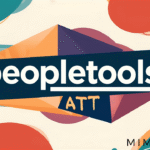What Are the Common Mistakes To Avoid During LEI Registration

Securing a Legal Entity Identifier (LEI) seems simple at first glance, but it’s easy to slip up. Even seemingly minor errors can lead to complications and extra costs. From rushing through forms to overlooking updates, many missteps can cause delays or rejection. This article sheds light on key mistakes people often make during LEI registration.
Entering Incorrect Legal Details
Mistakes in basic information may sound minor, but they carry weight during LEI validation. The details submitted must match official public records without exceptions. A small mismatch in spelling or format can cause the process to stop midway. It’s important to find the best LEI service provider that cross-verifies data before submission.
This extra layer of care helps ensure legal names, addresses, and entity types are captured exactly as recognized by registration databases. Staying consistent helps avoid costly back-and-forth corrections. Even a misplaced character or outdated address can turn into an unnecessary delay if left unchecked.
Skipping the Legal Registration Check
Before applying, not confirming if the entity is registered and active in its local jurisdiction can cause delays. Some applicants submit requests without checking their company’s current registration status, which leads to confusion during the LEI review stage. Always check if the organization appears in the proper legal register and whether the records are up to date.
A quick confirmation beforehand goes a long way in preventing hold-ups, especially when a fast turnaround is needed. Verifying registration in advance is one of the simplest ways to keep the process moving without interruption.
Overlooking Parent Company Information
Some applicants ignore ownership details even when disclosure is required. LEI registration may involve sharing who controls or owns the legal entity. Leaving this blank or entering it incorrectly often results in incomplete applications. Submitting accurate parent or holding company information is critical when this section applies.
That includes official names, registration identifiers, and current addresses. Transparency in ownership ensures the LEI aligns with reporting standards worldwide. Clarity in reporting ownership satisfies requirements and reflects proper accountability on record.
Not Renewing the LEI on Time
An expired LEI can block important financial tasks or cause regulatory concerns. Many entities don’t realize that LEIs are only valid for one year. Missing the renewal date can create complications when compliance checks are involved.
Set reminders well in advance or use a service that offers renewal tracking to avoid this. Keeping the code active ensures smoother operations and uninterrupted participation in financial systems. Staying ahead of deadlines can save both time and trouble during critical transactions or audits.
What Should You Look For in a Registration Provider?
A key question to ask before registering: what makes one provider more reliable than another? There’s more to it than price. Ease of use, clear instructions, and dependable turnaround times all matter during registration. Also, consider whether the provider keeps up with regulation changes and offers multilingual or regional support if needed.
Choosing a platform with features that match the entity’s needs leads to fewer errors and better long-term results. The right provider acts as a steady guide not just at sign-up but also throughout the lifecycle of the code.
To find the best LEI service provider, it’s wise to focus on reliability, transparency, and support during every step. While the registration process may seem administrative, it plays a vital role in establishing legal clarity for financial interactions.
Taking the time to avoid these common oversights allows entities to stay aligned with regulatory expectations and manage their records smoothly. Simple actions like double-checking data, knowing what information to submit, and choosing the right provider can go a long way.





